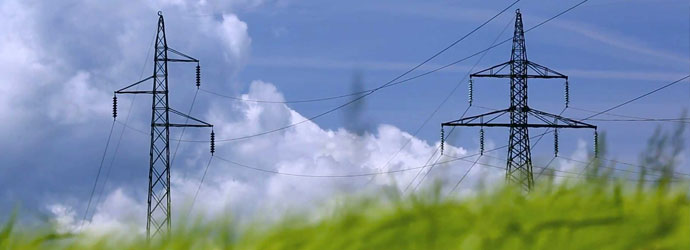It is now commonly recognised that cathodically-protected pipelines (and other metal structures) can be affected by AC from nearby power lines or traction systems, commonly referred to as AC mitigation. This phenomenon is thought to be of particular concern in the case of pipelines with high quality (e.g. fusion-bonded epoxy) coatings that run parallel to high-voltage overhead transmission lines. There is also evidence to suggest that AC corrosion can occur below the 15VAC threshold.
AC corrosion occurs at small coating holidays on pipelines with a good coating system as a result of interaction between the buried pipeline and high voltage overhead power lines. This inductive AC can occur wherever a pipeline runs parallel with a power line. As a consequence, regulatory bodies are introducing updated guidelines to monitor for and assess the likelihood of AC corrosion. The monitoring and logging of induced AC should now form an integral part of pipeline integrity management and pipeline operators will be increasingly required to utilise remote monitoring to remain in compliance.
The MERLIN™ cathodic protection monitoring system has been designed to enable pipeline operators to monitor levels of AC interference on their pipeline – and to monitor the effect (if any) on the cathodic protection system. The MERLIN CP monitor measures simultaneous DC and AC levels on all channels.
The remote locations of cross country pipelines can be hazardous, especially during times of inclement weather conditions. Test stations are often located at river crossings, which are prone to flooding, or by roads which expose technicians to possible traffic accidents. Electrical safety is also an issue at rectifier sites, where technicians must be trained and accredited in order to work on them, and at test stations where induced AC electric shocks can be generated from high current levels. Remote monitoring removes exposure to these hazards.
High pressure pipelines are almost always located in remote rural areas with the rectifiers commonly located at the pipeline mid-point. Each pipeline will have one or more rectifier and this results in time consuming and costly travel to remote locations, tying up skilled personnel who would be better utilised on other network tasks. Remote monitoring will also help reduce a company’s carbon footprint inline with international environmental standards which encourages the setting of performance indicators to reduce emissions.
There are also additional surveys required under the Pressure Systems Safety Regulations. Checks must be taken periodically which is essentially a reactive measure when taken manually. Faults can go undetected at a rectifier for a month between checks and several months at certain test stations. When the pipeline is left unprotected for significant periods, corrosion can be accelerated, shortening the useful lifetime of the pipeline. Remote monitoring ensures that faults are detected and responded to immediately, allowing financial savings to be made by extending the lifetime of the asset and reducing the amount of corrosion caused maintenance work.
As recently as 10 years ago, pipeline engineers were disputing that corrosion could be caused (or influenced) by AC. Very little monitoring of induced AC was carried out, apart from where it could present an electrical shock hazard. However, recent studies in both the US and UK have concluded that cathodically-protected pipelines can be affected by AC from nearby power lines. Damage may be caused to the coating of the pipeline and the overall corrosion rate may be accelerated.
A guideline threshold of 15VAC (equivalent to a current density of 100A/m²) has been set by NACE, above which action should be taken to mitigate AC effects; however, there is evidence that AC-assisted corrosion can occur at lower voltage levels but where the current density may be disproportionately higher due to local soil conditions.
Regulatory bodies are now introducing updated guidelines to evaluate the likelihood of AC corrosion and to deal with long-term AC interference. An important feature of the MERLIN system is measurement of AC voltage and current. This is proving useful in identifying patterns of AC interference and is contributing to continuing studies of this phenomenon.
For further information on how our MERLIN cathodic protection monitoring system can help with AC mitigation, please contact us.

